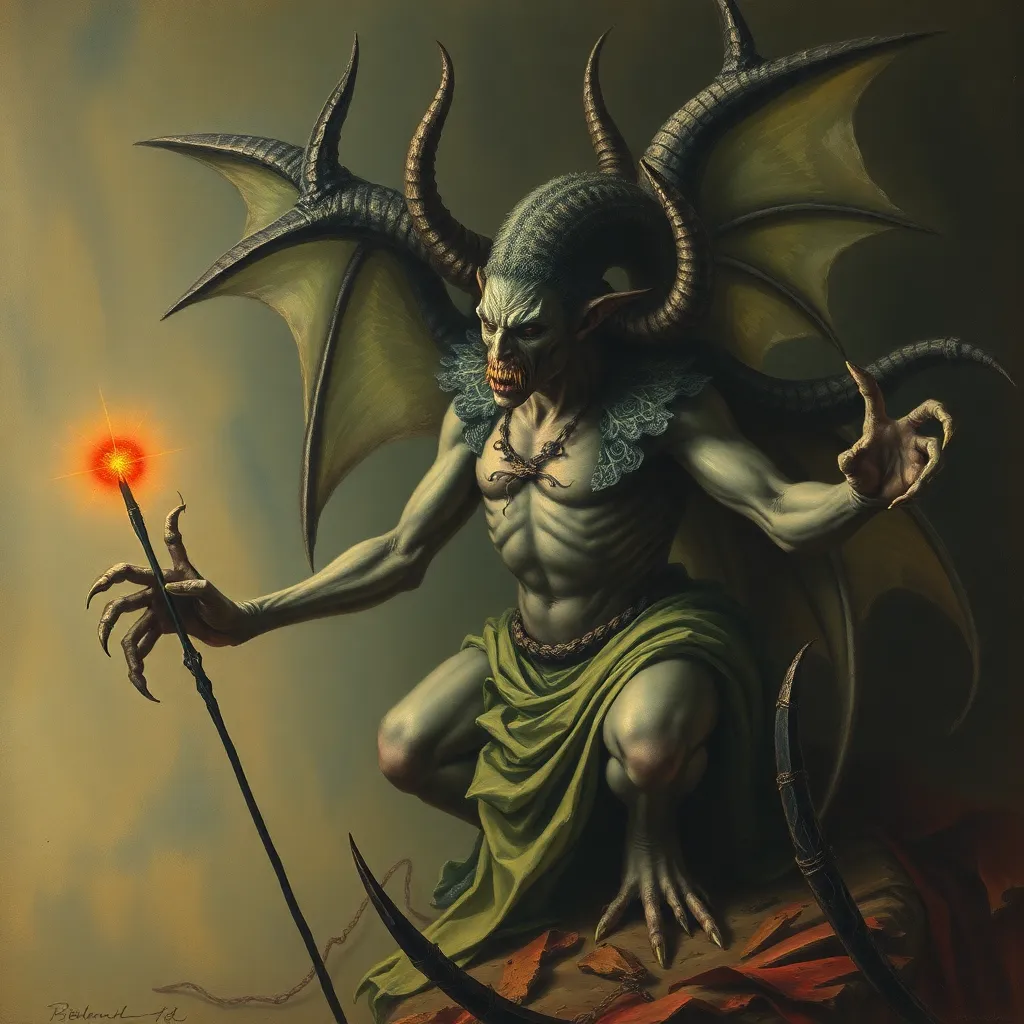The Lamia’s Revenge: Exploring the Motives and Consequences of Her Wrath
I. Introduction
The myth of Lamia is a haunting tale of love, betrayal, and vengeance that has captivated audiences for centuries. In ancient Greek mythology, Lamia was a beautiful queen who suffered immense tragedy, leading her to transform into a fearsome monster. This transformation and her subsequent quest for revenge raise profound questions about the consequences of betrayal and the nature of female rage.
Revenge plays a significant role in various mythological narratives, often serving as a catalyst for character development and themes of justice. This article aims to explore the Lamia myth, focusing on her motives for revenge, the consequences of her wrath, and the broader implications of her story in both ancient and modern contexts.
II. The Origins of the Lamia Myth
The origins of the Lamia myth can be traced back to ancient texts, which offer varying accounts of her story. Historical sources include works by poets such as Hesiod and Apollonius of Rhodes, who depicted Lamia as a tragic figure cursed by the gods.
In these texts, Lamia is characterized as a once-beautiful woman who is transformed into a monster, often described as having the ability to devour children. This monstrous portrayal reflects societal fears surrounding female power and sexuality, which were often demonized in ancient narratives.
As time progressed, the figure of Lamia evolved. Later interpretations emphasized her role as a seductress and a symbol of vengeance against male betrayal, showcasing how cultural perceptions of women shifted over the centuries.
III. The Story of Lamia: Betrayal and Transformation
The tale of Lamia is rooted in her tragic relationship with Zeus, the king of the gods. According to legend, Lamia was a lover of Zeus, but when his wife Hera discovered their affair, she sought to punish Lamia. Hera killed Lamia’s children, driving her into a state of despair and madness.
This betrayal had a profound impact on Lamia’s psyche. Overcome with grief and rage, she underwent a horrific transformation, becoming a monster who would later prey on the children of others, reflecting her own loss.
This metamorphosis from a woman to a monster is significant. It illustrates how betrayal can distort one’s identity and lead to destructive behaviors. Lamia’s transformation serves as a poignant reminder of the pain inflicted by betrayal and the dark paths it can lead one to tread.
IV. Motives Behind Lamia’s Revenge
The motives behind Lamia’s quest for revenge are deeply psychological. Her pain and loss are central to her character, as she seeks to reclaim a sense of control over her life that was stolen from her. The following factors contribute to her motives:
- Pain and Loss: Lamia’s immense grief over the loss of her children drives her to seek vengeance against those she perceives as responsible.
- Cultural Implications: The narrative reflects societal fears of female rage, often portraying women who seek revenge as monstrous or dangerous.
- Desire for Retribution: Lamia’s actions can be seen as a response to the injustice she suffered, highlighting the theme of retribution against her enemies, particularly Hera.
V. The Consequences of Lamia’s Wrath
The consequences of Lamia’s vengeance are far-reaching, affecting not only her victims but also their families and society at large. Her wrath leads to tragic outcomes for those she targets, often resulting in the loss of innocence and life.
Moreover, Lamia’s actions serve as a cautionary tale within society, illustrating the potential dangers of unchecked rage and the cycle of vengeance. Through her story, we see:
- Effects on Victims: Lamia’s predation disrupts families and communities, leaving behind a trail of grief.
- Broader Societal Impact: Her revenge reflects societal tensions regarding the treatment of women and the consequences of betrayal.
- Consequences for Lamia: Ultimately, her quest for revenge leaves her in a state of perpetual suffering, trapped in her monstrous form.
VI. Symbolism of Lamia in Literature and Art
Lamia’s story has inspired countless depictions in classical literature and art, each interpretation adding layers of meaning to her character. In literature, she is often portrayed as a seductress or a tragic figure, reflecting the complexities of female identity.
Artistic representations of Lamia also convey important themes:
- Classical Literature: Writers like John Keats have used Lamia as a symbol of the conflict between love and desire, emphasizing her tragic nature.
- Artistic Representations: Visual artworks often depict her as a beautiful yet dangerous figure, embodying the duality of femininity.
- Symbol of Empowerment: Some modern interpretations view Lamia as a symbol of female empowerment, illustrating the fierce consequences of betrayal.
VII. Modern Interpretations of Lamia’s Revenge
In contemporary literature and media, the Lamia myth continues to resonate. Modern interpretations often explore themes of revenge and justice, reflecting ongoing societal struggles regarding gender and power dynamics.
Examples of Lamia’s representation in modern narratives include:
- Literature: Many authors draw parallels between Lamia’s plight and contemporary issues of women’s rights and empowerment.
- Film and Television: Adaptations often portray Lamia as a complex character, highlighting her motivations and the societal injustices she faces.
- The Relevance Today: The themes of vengeance and justice in Lamia’s story remain relevant, prompting discussions about the consequences of betrayal in society.
VIII. Conclusion
In summary, Lamia’s motives for revenge are rooted in profound pain and loss, leading to tragic consequences for her victims and herself. Her story serves as a powerful commentary on the nature of betrayal and the societal implications of female rage.
The enduring legacy of the Lamia myth continues to inspire discussions about justice and retribution in our modern world. As we reflect on her tale, we are reminded of the complexities of revenge and its implications in society, urging us to consider the consequences of our actions and the pain we may inflict on others.



